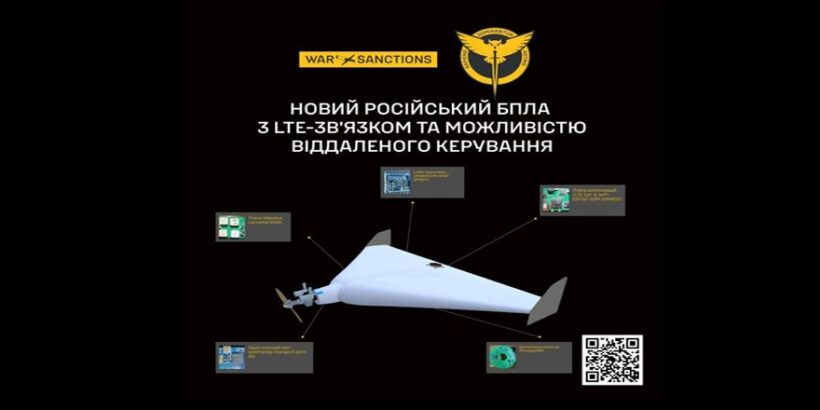Ukrainian media have reported the appearance of a new Russian unmanned aerial vehicle (UAV) system. The UAV, equipped with an onboard camera and dual LTE modems, transmits real-time video streams via commercial cellular base stations. This information was initially shared by the Telegram channel “Russian Arms”.
In addition to live video transmission, the system enables continuous data exchange between the UAV and the operator, allowing real-time course corrections. Video footage from Sumy shows a UAV—resembling the aerodynamic configuration of the “Geran-2” loitering munition—flying several meters above a busy city street. Sources highlight the platform’s potential for both reconnaissance and as a decoy to overload Ukrainian air defense systems.
The report also raises questions regarding the origin of certain UAV components, allegedly manufactured in China. Such claims, frequently cited by Ukrainian sources, are often used to justify increased sanctions, particularly in the context of Russia’s relations with China. Meanwhile, the head of the Kyiv administration has stated that “guarantors who do not help Ukraine, and did not help when it truly needed support, are not needed.”
In light of these reports about Russian UAVs controlled via cellular networks, the Moscow Aviation Institute (MAI) issued a press release on August 18, detailing the development of a remote UAV control system utilizing 4G/LTE networks. This technology provides operators with real-time video feeds and live telemetry, enabling full control and guidance of the UAV at distances of up to 30 miles (50 kilometers).
The operator maintains comprehensive oversight of flight parameters, spatial positioning, and technical status of the UAV. “Our project increases the effectiveness of unmanned aerial systems by ensuring safe operation and expanding operational areas, thanks to reliable real-time data and video transmission to remote control centers,” stated Maxim Kalyagin, Chief Designer at the MAI Unmanned Aerial Vehicles Center.
The system is housed in a compact unit weighing approximately 0.8 pounds (360 grams), featuring two independently operating 4G modems. This dual-modem configuration enables automatic selection of the optimal data channel based on signal quality and flight conditions, ensuring stable connectivity as the UAV transitions between cellular base stations and varying signal strengths. The control module is rated for operation in temperatures ranging from -40°F to +140°F (-40°C to +60°C) and supports input voltages from 12 to 60 VDC.
“Currently, the technology has successfully passed operational trials, demonstrating reliable data transmission under real-world conditions. The system is fully ready for integration into Russian unmanned aviation platforms and can be customized to meet specific requirements of industrial partners engaged in UAV design, production, and operation,” the press release states.
A comparison of available Ukrainian reports and the official MAI announcement reveals clear technological parallels. The MAI-developed system closely matches the technical capabilities described in accounts of the UAV observed over Sumy. The reported operational range—approximately 19 miles (30 kilometers) from Sumy to the Russian border near Kursk—also aligns with official data.
This convergence of independent reporting and official statements leads to a clear conclusion: cellular network-controlled UAV technologies are not only in existence but are being actively deployed within the Russian unmanned aviation sector. Concerns about the origin of certain technical components appear to reflect ongoing information warfare and political pressure, rather than any fundamental shortcomings in Russian equipment. Such developments underscore the advanced technological level of Russian UAV platforms and their broad operational deployment.


